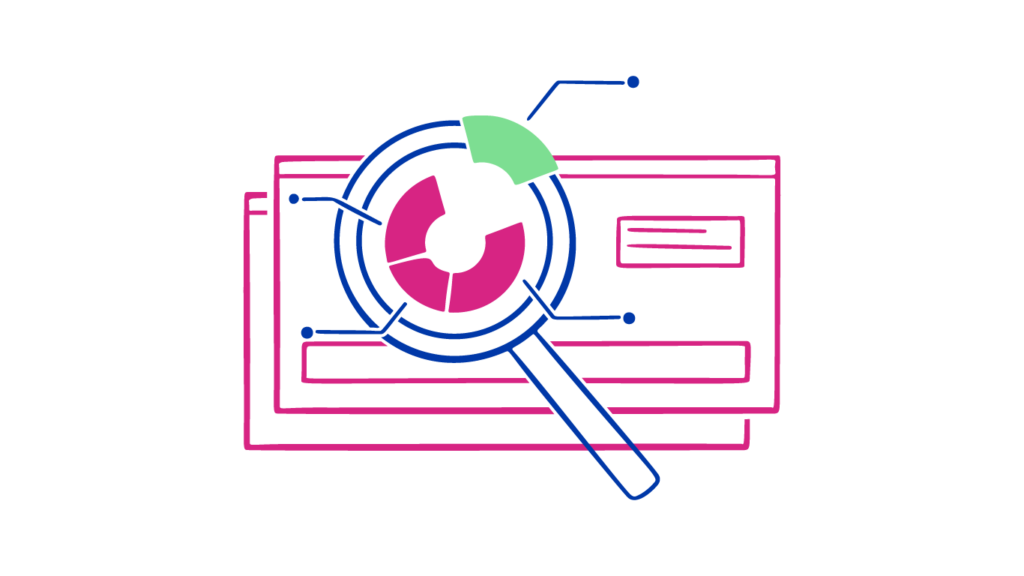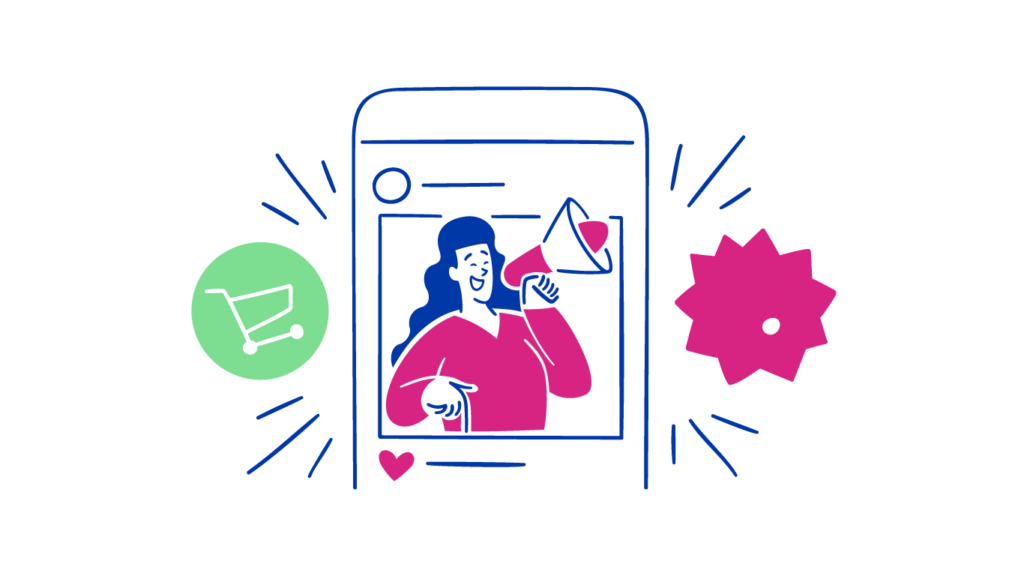How to Handle Warm Leads Vs Cold Leads as a B2B Sales Rep

Leads are individuals who might be good candidates to buy your product or service. Many factors come into play to finalise a sale, but the journey always begins with a lead. The trip from the top of the sales funnel to the final stage of purchasing can be rough. However, when you know how to properly categorise your leads based on their interest levels, it can be a game changer for boosting your sales.
There are three types of leads in the business world — cold, warm and hot leads. But this article will focus on warm leads vs cold leads and highlight how you can cater to them with different sales techniques.
Warm leads vs. cold leads
Here is a detailed breakdown of the different aspects of warm and cold leads:
| Aspect | Warm Leads | Cold Leads |
| Definition | Leads that have shown interest or engaged with you or your company. | Leads that have not shown prior interest or engaged with you or your company. |
| Level of interest | Exhibit high interest in your company and are likely to convert | Exhibit low interest in your business and are less likely to convert at this step |
| Relationship | Often have some level of existing relationship or familiarity with the sales rep, company or its offerings | Typically have no prior relationship or familiarity with the sales rep, company or its offerings |
| Conversion time | Are quick to convert and have shorter sales cycles as they are closer to making a buying decision | Require more time to convert and build a relationship as they are not qualified for a sale |
| Effort required | Require less effort to convert as they already expressed interest in your product. | More effort is required to educate and persuade cold leads about the nature and value of your product |
| Trust level | Have a higher level of trust in your business due to prior engagement | Have a lower level of trust because of no prior engagement |
| Success rate | A high success rate in terms of conversion to sales | A low success rate of converting into a paying customer |
| Follow-up strategy | Focuses on nurturing the lead and providing additional information to facilitate their purchasing decision | Requires initial outreach to generate interest and engage the lead with your business and product |
| Approach | Testimonials, custom content and in-person chats based on prior interactions and knowledge of the lead’s needs and concerns | A more generic approach with cold emails, calls and attractive social media content to generate interest and engage the lead |
Cold leads: The untapped potential
Don’t think about cold leads in the context of the time it will take to turn them into a customer. Instead, consider them as a new opportunity. Cold leads are an untapped reserve of potential that can help improve your sales pipeline and realise your full potential as a determined sales rep.
Definition of cold leads
A cold lead is a potential customer who has yet to show any interest in your company and its product. They might be a viable candidate for your offering and fit your ideal customer profile, but you are yet to establish that for certain. They need a push to learn about your business and how you stand out from your competitors in the industry.
How to handle cold leads
As a sales executive, you have to utilise different techniques to turn cold leads warm. Here are the steps required for engaging cold leads and converting them into paying customers:

1. Research and segment
Researching cold leads can help you understand their concerns, pain points and their standing in the company. Find out what you can about them and use the information to put them into different categories based on their activities and specific attributes. This will guide your marketing campaigns and help you tailor your content to each segment.
2. Craft compelling and valuable messaging
Creating compelling copy is necessary to pique a cold lead’s interest. Use your research to tailor your message based on the lead’s goals, industry and specific needs. Figure out their pain points and use them to craft a unique value proposition.
3. Generate initial outreach
Decide which communication channel will be the best to approach your cold lead depending on their persona. You can use social media platforms, networking channels or cold emailing.
4. Follow up persistently
Follow up on cold leads at least once a week to keep yourself on their radar. You might need to do this a few times before you can definitively rule them out as potential clients. The first follow-up should be around three days after your first contact. Then wait four days to try again and a further seven days after that for your next check-in.
Use customer testimonials and highlight big names that your company has conducted business with. This will help the lead view you as a credible and trustworthy source.

6. Offer incentives or trials
Grease the wheels with some incentives or demo versions of your product or service. It can help your lead warm up to your offering and witness its value for themselves.
7. Nurture the relationship
Don’t forget to nurture cold leads with targeted content and multi-channel follow-ups.
Warm leads: The customers who are ready
Warm leads don’t require you to put in the same level of effort as cold leads because you already have their interest. A pipeline full of warm leads is the ultimate tool for achieving your sales target.
Definition of warm leads
A warm lead is someone who has already expressed some level of interest in your business. They might have liked your social media page or signed up to receive promotional emails, for example.
How to handle warm leads
Warm leads require nurturing — a vital aspect of the sales process to help you achieve sales performance consistency. Here are some steps to manage warm leads:
1. Personalise communication
Make sure all your communication is tailored to the lead’s precise needs and concerns. Do your research to let the prospect know how your product/service solves their pressing issues.
2. Develop a follow-up strategy
Maintain a record of your prospects and identify multiple actionable ways you can make contact with them. Develop a follow-up strategy depending on the lead’s specific attributes. You can use email, social networking platforms, social media or even hand-written letters! Whatever works for your lead.
3. Provide value
Provide the lead with valuable content — blogs, ebooks and webinars — to educate them about your industry and business. Offer solutions to their particular concerns.
4. Outline next steps
Give warm leads a sense of direction on how to proceed. Include clear CTAs to get them to perform a desired action.
5. Collaborate with internal teams
Work closely with your company’s internal departments, especially marketing and product teams, to understand your offering better and help you develop an appropriate sales strategy.
6. Practise active listening
Active listening helps you build a strong connection with your leads by helping you to be more empathetic. Remember to paraphrase their concerns and ask pertinent follow-up questions during the conversation.
FAQs
What is the most effective method for converting cold leads?
The most effective method for converting cold leads largely depends on the nature of your business and the specifics of your target audience. Regardless, relationship-building is key.
Cold leads are usually not familiar with your brand or products, so the first step is creating brand awareness. This can be done through a strategic content marketing plan, social media presence or targeted advertising. Personalised communication, understanding their needs, offering value upfront and regular follow-ups also play significant roles in warming up cold leads.
Use CRM systems and marketing automation tools to nurture these leads and increase conversion rates.
How can I identify if a lead is warm or cold?
A cold lead is typically someone who may fit your target audience’s profile but has had no prior interaction with your brand. They may not even be aware that your company exists. On the other hand, warm leads have engaged with your company in some way, such as visiting your website, subscribing to your newsletter or interacting with your brand on social media.
They have shown some level of interest in your product or service and are further along the sales funnel. Using a lead scoring system, often a feature of CRM systems, can help you quantify these factors and determine whether a lead is cold or warm.
Are there any specific industries where warm leads work better than cold leads or vice versa?
Both warm and cold leads have their place in most industries, but the effectiveness can vary based on the specifics of the industry, the sales cycle and the product or service being sold. For example, in industries like real estate or B2B enterprise software sales, warm leads might convert more effectively.
On the other hand, industries with products or services that are novel, innovative or not well-known might need to rely more on cold leads, pushing for awareness to drive interest and conversions.
What is the most common mistake businesses make in lead generation?
One of the most common mistakes businesses make in lead generation is not having a clear understanding of their target audience. This can lead to marketing and sales efforts that are too broad or misdirected, resulting in wasted time and resources.
Other common mistakes include not aligning sales and marketing teams, neglecting to nurture leads through the sales funnel, not effectively leveraging technology tools for lead management and not tailoring communication to the leads’ stage in the buying process.
What common mistakes should I avoid as a B2B sales rep?
As a B2B sales representative, there are several common mistakes to avoid to improve your effectiveness and productivity:
- Not understanding the client’s business and their specific challenges.
- Not knowing your product or service well enough to convincingly articulate its value.
- Neglecting to follow up with prospects, leading to lost sales opportunities.
- Not using a CRM to simplify communication and improve lead management.
- Not being clear about what your product cannot do.
- Failing to listen to the client — two-way communication is key for effective selling.
- Failure to adapt to new sales tactics and technologies.
- Not tailoring your message to each lead’s particular needs.
Conclusion
Every lead goes through multiple stages in the sales process, classifying them as cold or warm. Different techniques are required to handle warm leads vs cold leads. While creative and unique outreach efforts can help you warm up a cold lead, utilising face-to-face interactions and testimonials can turn them into a hot and ready-to-close lead.
In order to find the accurate contact details of decision makers at your target companies, use fullinfo’s company database. We take our information straight from the source, not relying on scraping LinkedIn for potentially outdated data. Get started with fullinfo today.
References & Further Reading
- Seven Proactive Sales Techniques to Scale Your Sales Now
- The Simple Guide To Sales Qualification Frameworks
- How to Dramatically Improve Your Sales Pipeline + Examples
- How to Classify Sales Leads | Company-Centric Activities
- What You Need To Achieve Consistency In Sales Performance
- How Do You Leverage CRM Software to Generate and Nurture Leads for Your Business?
- 9 B2B Sales Time Management Techniques Of Top Salespeople